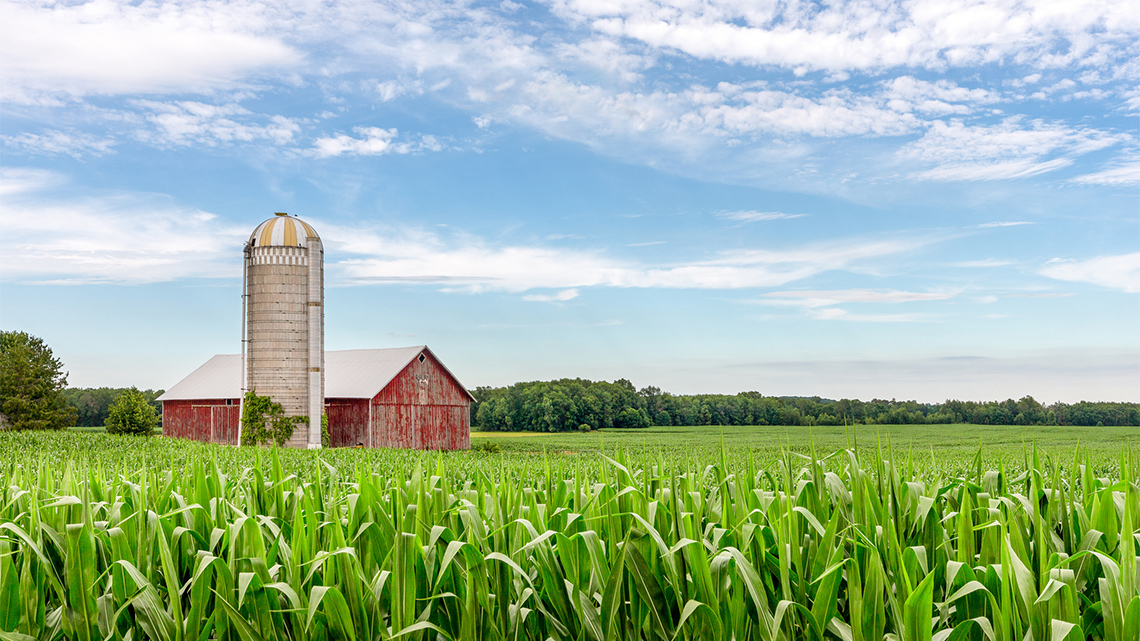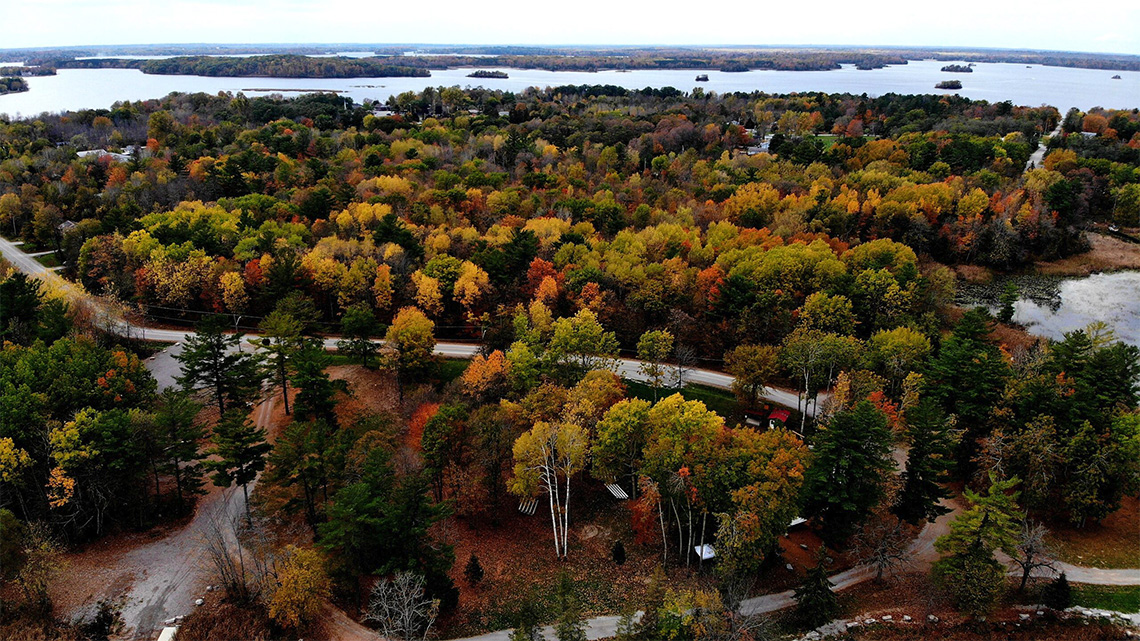Minds On
Types of communities
All over Canada, there are many types of communities and neighbourhoods. Each type of community has its own impact on the environment.
Explore this carousel of images and descriptions of some of these communities. For each community record the following using a method of your choice.
- describe the type of community
- describe one feature of that community
- describe one way the community may impact the environment.
Press ‘Hint’ to reveal a hint about how communities can impact the environment.
Action
Types of settlements in the 1780s–1850s
In what we now call Canada, in the late 1700s and early 1800s there were some settlements that were already built, and some new ones being built. Some settlements were large and included many buildings and others were smaller, built into forests and field areas. Some settlements were even created to move from one location to another.
Settlements were created because of the environment and resources in those areas as well as the lifestyle that the people led.
Each new settlement affected the natural resources and the natural environment in unique ways. They also affected the settlements that were already here!
Let’s explore a few of these different types of settlements.
Seasonal settlements
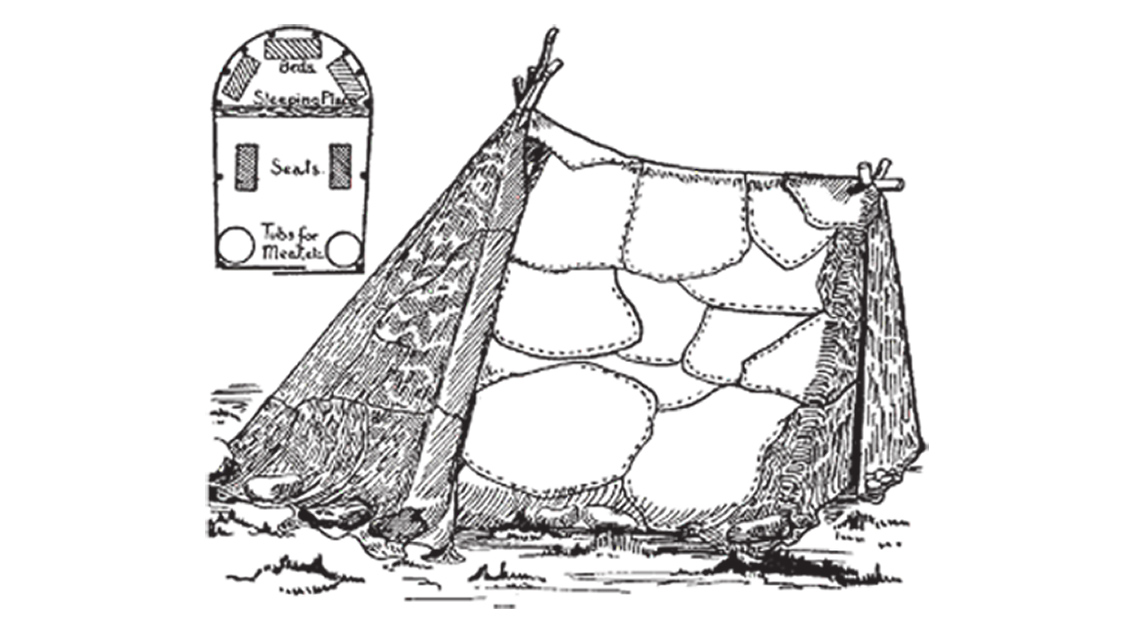
This is an image of a seasonal Inuit shelter. It appears tent-like and has space for sleeping and eating.
Seasonal settlements were settlements that were created for a short time. They were used by communities that travelled often to hunt for their food. These communities were used by Inuit communities and First Nation communities who hunted and fished for their food in a large territory.
These communities packed up their belongings and tried to leave little trace that they were there. This means that they only had a little impact on the natural environment because they tried not to change it and only disturbed it for a short amount of time.
Test your knowledge of seasonal settlements by completing the following true or false questions.
Farming communities
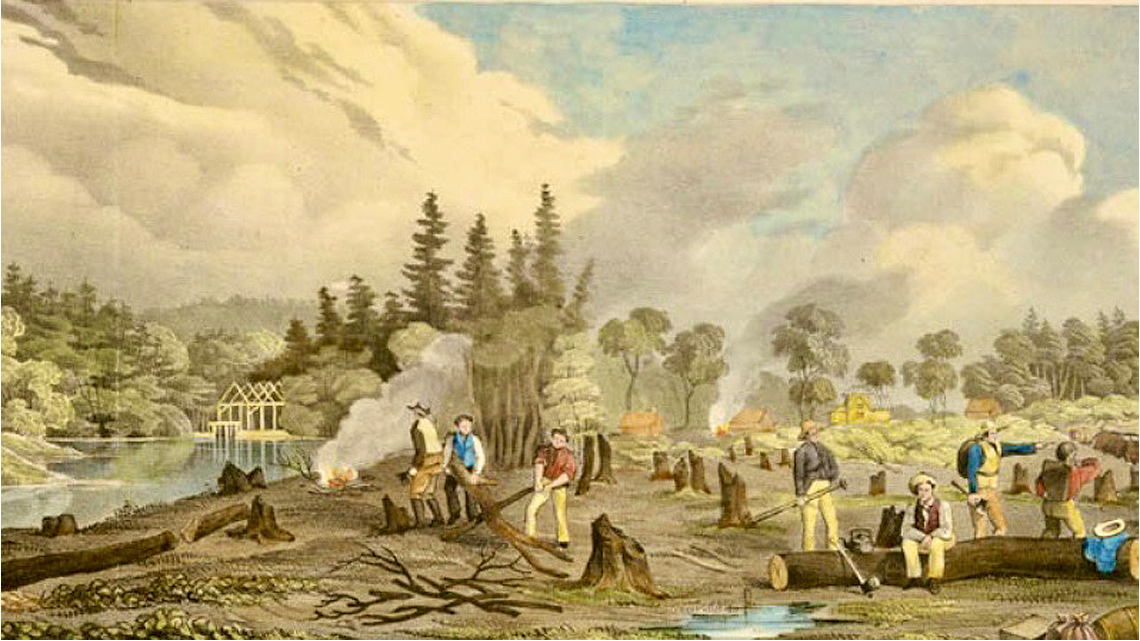
A image of an area that has been cleared for a settlement. There are many people with axes chopping trees. There is a fire lit in the background.
Many of the settlers who moved into what we now call Canada in the 1800s moved into farming communities. At the time, much of the land was wilderness and had to be cleared by the settlers to create the farmland. This would have an impact on the natural environment and the plants and animals that lived in those wilderness areas.
These new settlements had an impact on the First Nations communities that already lived in this area. By clearing the land for their homes, community buildings, crops and gardens, the settlers were taking the homeland as well as hunting and fishing lands from these First Nations communities.
Test your knowledge of farming settlements by completing the following true or false questions.
First Nations farming communities
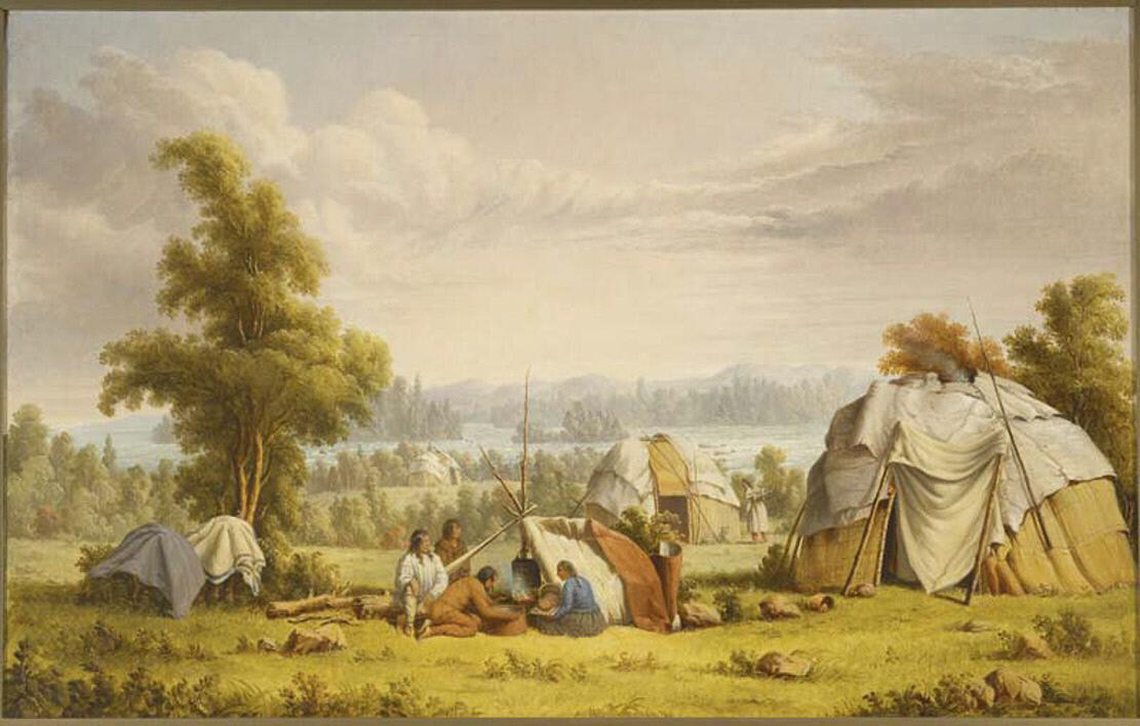
An Ojibwe village. The Ojibwe communities lived in dome-shaped homes called wigwams.
Anishinaabeg First Nations, such as the Ojibwe Nation, lived in territories of what we now call Ontario when the settlers arrived. These communities lived in dome-shaped homes called wigwams. They gardened, hunted, and fished in large areas surrounding their communities.
The Ojibwe Nation lived sustainably. Their relationship with the Earth meant that they only took what they absolutely needed, leaving resources in the area for future generations. Their impact on the natural environment was small. They did not clear large areas for building and growing their vegetables. As well, they gave thanks to Mother Earth for all that she provided for them every day.
Test your knowledge of First Nations farming communities by completing the following true or false questions.
Large towns
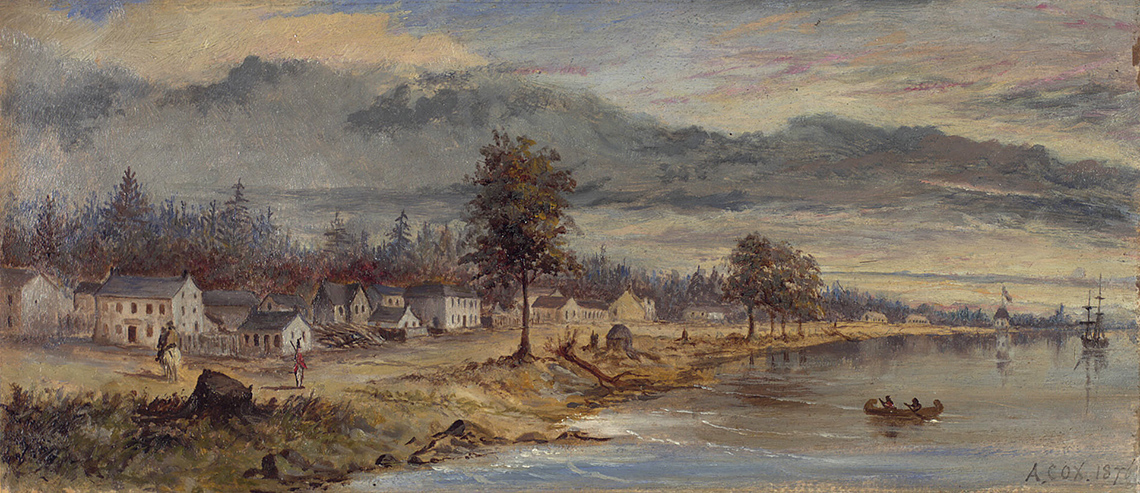
York in 1803, the capital of Upper Canada. There are many houses and buildings along the shoreline.
Established in 1793, York was a large town in Upper Canada. It became the capital city in 1796. Larger towns such as York were built along large bodies of water. They included homes (with large homes for the wealthy), roads, office buildings for government offices, lawyers, bankers, and other professions. There were also doctors’ offices, inns, grocers, churches, and buildings used for storage.
The building of towns such as these would have an impact on the natural environment, as large areas of forest and wilderness needed to be cleared. The lake would also be impacted by large boats travelling in and out of the town, and the resources that were found in the area would be used by many people.
Any settlements that did exist in this area would have been moved to make room for building.
Test your knowledge of large towns like York by completing the following true or false questions.
Reflect on your learning

Which type of settlement do you think was affected the most when larger towns were built? Why?
Consolidation
Settlements and their impact on the environment

You have learned about four of the types of settlements that were in what we now call Canada in the late 1700s and early 1800s.
Which of these settlements would have had the smallest impact on the natural environment? Which would have had the largest impact on the natural environment?
Rank the four types of settlements.
The settlement in fourth place would have the largest impact on the environment and the settlement in first place would have the smallest impact on the environment.
Complete the Settlement Ranking Chart in your notebook or use the following fillable and printable document. You may also use a method of your choice.
|
1st Place (Smallest Impact on the Environment) |
|
|---|---|
|
2nd Place |
|
|
3rd place |
|
|
4th place (largest impact on the environment) |
Press the ‘Activity’ button to access Settlement Ranking Chart.
Why did you choose your first place settlement? Why did it have the smallest impact on the environment?
Why did you choose your fourth place settlement? Why did it have the largest impact on the environment?
Reflection
How do you feel about what you have learned in this activity? Which of the next four sentences best matches how you are feeling about your learning? Press the button that is beside this sentence.
I feel...
Now, record your ideas about your feelings using a voice recorder, speech-to-text, or writing tool.
